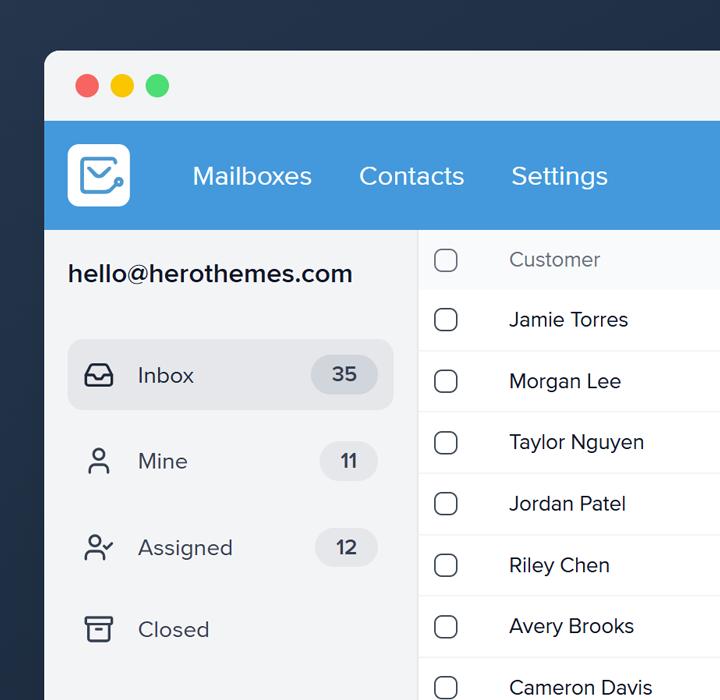Let’s Wrap Up, Schedule Your Exit Interview
Tone: Friendly, action‑oriented.
The phrase “Let’s Wrap Up” hints at closure and partnership. “Schedule Your Exit Interview” clearly states the request. You set expectations and provide next steps all at once. People respond better when they know exactly what you need and why it matters.
Tips
Include a calendar link in the body. If you mention specific slots, use square brackets: “[Monday at 2 PM]” so the reader can click to confirm.
We Value Your Thoughts, Exit Interview Inside
Tone: Encouraging, respectful.
Starting with “We value your thoughts” sets a tone of genuine interest. Adding “Exit Interview Inside” tells the reader exactly what the email is about.
Your Final Feedback Session with [Company]
Tone: Formal, considerate.
Putting “Your Final Feedback Session” at the beginning signals seriousness, and mentioning the company reminds the reader of the shared history. This format makes it feel like an exclusive meeting invitation rather than a generic survey, raising the perceived importance and respect.
Tips
- Add a clear deadline in the pre‑header.
- If you offer virtual or in‑person options, mention that in the opening line.
That way, employees know you respect their schedule and preferences.
Email Example:
Hi [Name],
Thank you for your contributions over the years.
We’d appreciate a 20‑minute meeting to gather your final insights on culture, processes, and growth.
Please click the link below to pick a slot that works for you.
Schedule My Feedback SessionBest,
[HR Team]
Reminder, Complete Your Exit Interview by [Date]
Tone: Polite, time‑sensitive.
“Complete Your Exit Interview by [Date]” clearly defines the objective and deadline for completing the exit interview. Deadline cues get things moving, and square brackets prepare the reader to see a real calendar date.
Tips
- Send this reminder 48 hours before the original deadline, and again 24 hours before if needed.
- In the email body, restate the link and thank them in advance.
- Keep phrasing consistent so the thread stays clean.
Quick check‑in before your last day, [Name]
Tone: Friendly, informal, caring.
This line sounds like a colleague reaching out, not a policy being enforced. That softness encourages engagement.
Here are some tips:
Use this only if you’ve had some rapport with the employee. If it’s a more corporate context, you can play around with the line a bit more and add context in the email body.
What worked, what didn’t? Help us grow
Tone: Honest, open, appreciative.
Questions like “What worked, what didn’t?” are emotionally safe because they balance critique with praise.
Pair it with a body paragraph that explains how past feedback has led to real change. That proof builds trust.
Subject Line: Wrap things up? A few parting thoughts from you
Before you head out, your voice matters
Tone: Grateful, warm, validating.
The phrase “your voice matters” is especially popular in inclusive, people-first companies. It can boost trust, especially with teams that value psychological safety.
Tips
Keep the email short and include a clear example of how employee feedback has shaped something real in the past. That helps close the loop.
We’d love 5 minutes of your insight, [Name]
Type: Time-specific, respectful
Tone: Polite, quick, personal.
Numbers help people estimate effort. “5 minutes” feels like a reasonable amount of time, and the name makes it personal. When employees feel swamped during offboarding, specific details like this one can make it easier for them to adjust.
Optional but helpful: quick exit interview link
Type: Soft opt-in, low-pressure exit interview
Tone: Neutral, transparent, helpful.
When employees feel like they have a choice, it reduces pressure and builds trust. “Optional but helpful” reminds the person that you appreciate their feedback, but you won’t be upset if they don’t say anything.
This kind of subject line is especially useful for companies that value independence and self-direction.
Exit Interview Invitation, Share Your Feedback
Tone: Warm, appreciative, straightforward.
A simple line to directly ask employees to share their feedback before leaving.
Tips
Send this email early in the week and follow up with a concise preheader, such as “Takes five minutes,” and personalize it with the recipient’s name to establish a connection. Avoid vague wording; otherwise, the email may land in “chore” territory.
Subject Line: Let’s Wrap Up, Schedule Your Exit Interview
